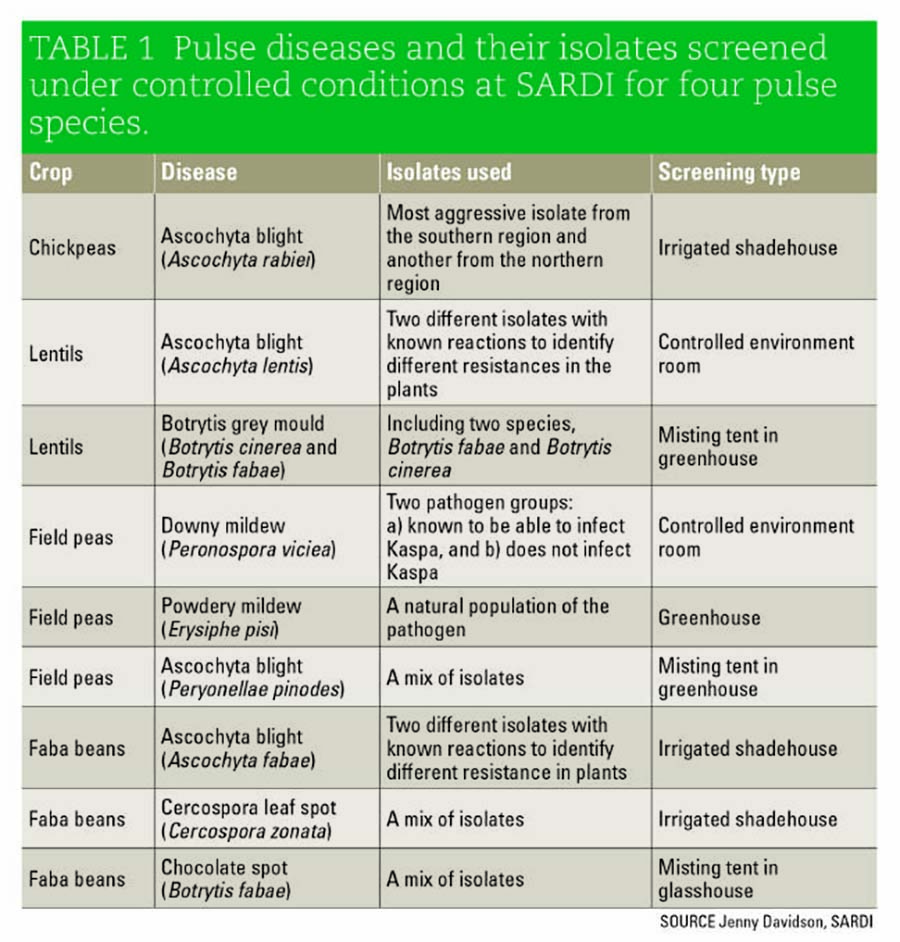Diseases of pulses are renowned for changing virulence and rapidly producing new isolates, which can be potentially devastating to crops.
To keep one jump ahead, researchers at Primary Industries and Regions South Australia's research division - the South Australian Research and Development Institute (SARDI) - undertake controlled environment work on isolates of diseases important to southern pulse NVT entries.
This produces information on regional differences in cultivar resistance according to the geographical spread of different isolates and also warns of a potential breakdown in disease resistance before virulent isolates are widespread.
Controlled screening

Table 1 illustrates the pulse diseases that are screened at SARDI in controlled conditions, such as greenhouses, controlled environment rooms and irrigated shade houses.
These environments simulate the conditions that suit the pathogen infection and are based on current knowledge of isolate reactions.
The expertise and knowledge applied has come from many years of screening plant entries for pulse breeding programs and from conducting pathogen population surveys, which are also tested on differential host sets in these same controlled conditions.
For example, downy mildew of field peas is screened in a controlled environment room at cold temperatures (8°C to 12°C) with high humidity, while ascochyta blight of chickpeas is best screened outside in an irrigated shadehouse.
The expertise and knowledge applied has come from many years of screening plant entries for pulse breeding programs and from conducting pathogen population surveys, which are also tested on differential host sets in these same controlled conditions.
More information: Dr Jenny Davidson, 08 8429 2228, Jenny.Davidson@sa.gov.au

























































